(Written by William)
Recently, I put together the #10304 LEGO Icons Chevrolet Camaro Z28 that was released last year, and I was blown away by how great of a building experience I had. Keep in mind, I’m not the biggest gearhead around, nor am I a massive fan of Chevrolet. Rather, I have found the large vehicles in the LEGO Icons series to be some of the best building experiences I have had each year.
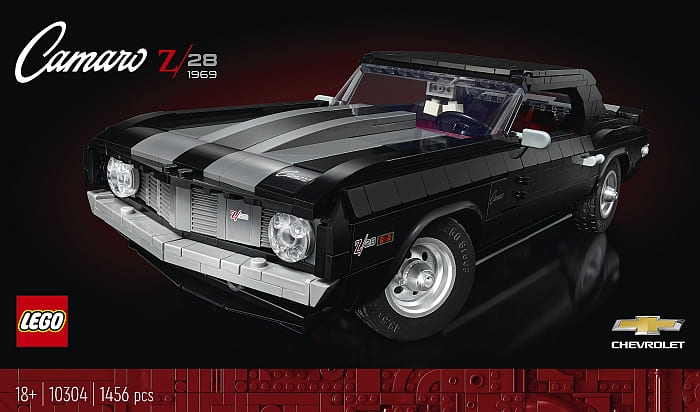
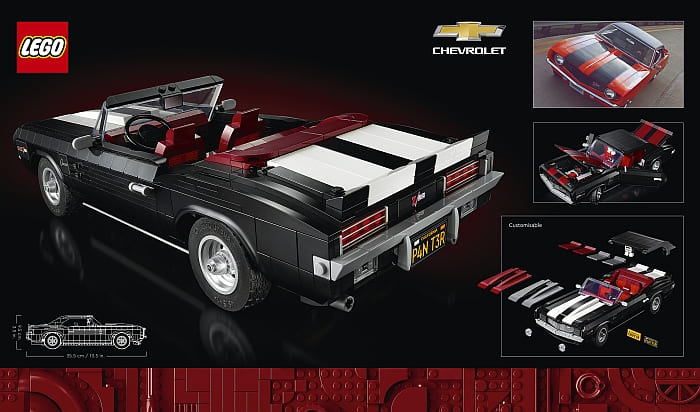
I figured this would be a perfect set to use as an example for talking about how to provide an interesting building experience when you design your own projects. This can be especially important if you ever consider submitting your own designs to the LEGO Ideas platform or to the BrickLink Designer Program. You see, the finished product will get people’s attention, but a model that was fun to put together will keep people talking about a set for years to come. So let’s take a look at how the Chevrolet Camaro achieves this.
LEGO CHEVROLET CAMARO – INTERESTING SHAPING
Many of the vehicles in the LEGO Icons line have distinct features. The Camaro, for instance, has a rather pointed front grill. It also has rather elaborate shaping under the front and back bumpers. In the grand scheme of things, these aren’t massively unique characteristics that stand out like an interesting play feature, however, they add a level of care and precision that a builder will enjoy.
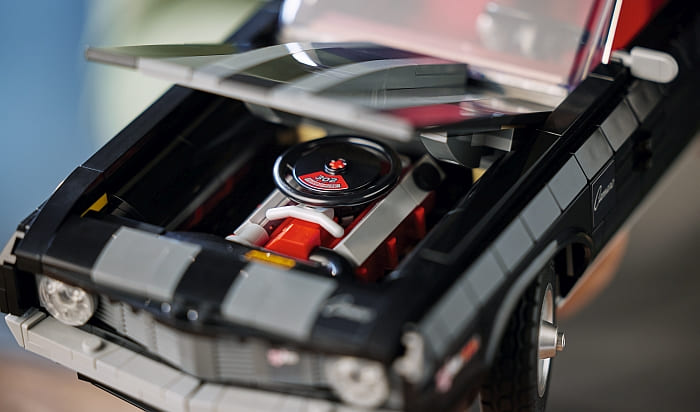
A fan who just loves building tends to look for moments and instances in the building process that are challenging and unique without being frustrating. Interesting shapes are excellent at providing this level of challenge. This exposes the builder to new parts they may not have considered. Or novel ways to connect existing parts, which can bring a measure of excitement to the building process. Additionally, this also can lead to points of surprise and wonder, as it can be hard to guess what’s coming next.
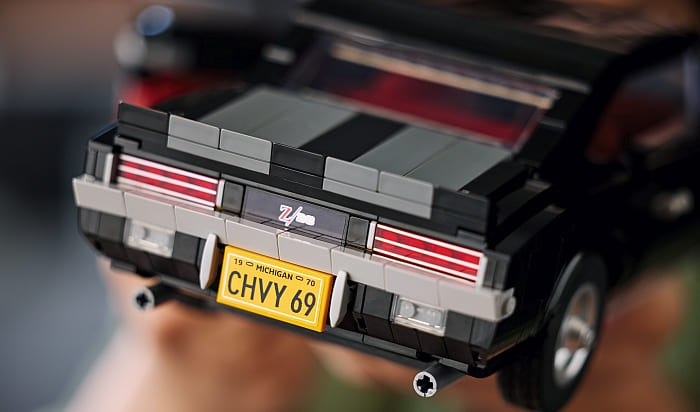
Too often, we think of building with LEGO elements in very straight lines. This is very functional at times and will get the job done, but it is the interesting shapes that will elevate your skill and the way people view your creations.
When it comes to the Camaro, I suggest studying both the front and rear of the vehicle. You’ll see an unexpected amount of different connection points from ball and sockets, to hinges, to pin connections, to sideways brackets, to clips and bars – all blended in a way that makes the final shape subtle yet deceptively simple.
LEGO CHEVROLET CAMARO – CLEVER PARTS USAGE
I think most people know to use this technique already. It is the basis of what people get hyped about. The Camaro offers a few nice choices, but they are not entirely obvious. And I think that is the secret. If a part looks like it was specially made for something, yet we know its original design wasn’t made for it, we feel great excitement and delight. For that reason, minifigure accessories are the ideal parts for this purpose.
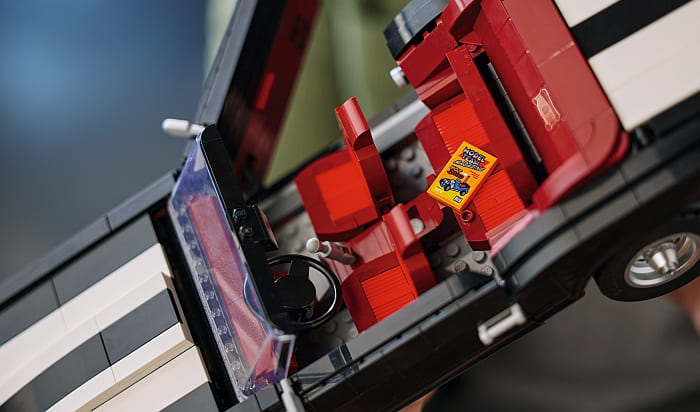
The Camaro uses two of these parts. The first is the most obvious; popsicles used for the side mirrors. They are simple, and unassuming, and look like they were made for that purpose. The second usage that really caught my attention was the two axes that are on either side of the license plate at the back (see image above). You only see the head of each axe, but they blend so perfectly with the rest of the car you might not notice they are there. The key is not to overuse this or force it, but if you can do it, you’ve got building magic.
LEGO CAMARO – THE FEELING OF PROGRESS
This is something that we experience in every LEGO set we put together, but not something we think about when building our own models. Sets that reach a certain size are broken down into numbered steps. This is to facilitate an easier building experience. It used to be that sets had no numbered bags and you’d just have to get neck-deep into a lot of parts and hope everything worked out. It made building tedious.
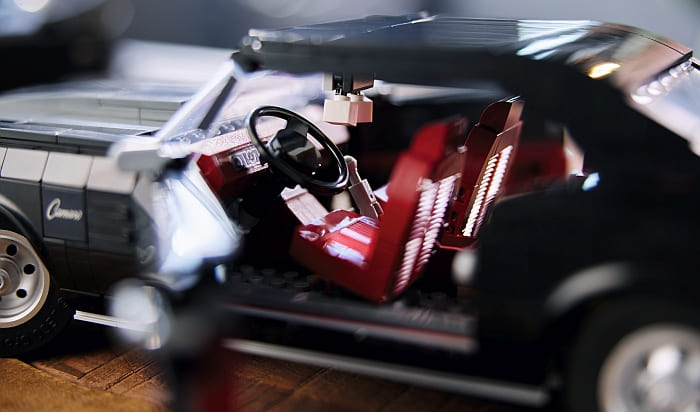
So, it is obvious why sets are now broken down into numbered stages, but how can we use this concept and even improve upon it? It is easy; think of the numbers as chapters in a book. Each chapter will further your vision or idea.
The way that this takes place in a LEGO model is by showing progress. Let’s use the Camaro as an example. The first bag gives you the frame of the vehicle. The next bag gives you clues as to how the sides of the vehicle will be decorated (in this case, lots of brackets). Then we move to how the steering system works, and so on. Each numbered stage has a clear idea and stays focused on that concept.

For a builder, this is metaphoric to building in their head. Each step and stage is an important building block in how something takes shape. I’ve experienced a number of fan designs that don’t take this concept into play and just try to build everything all at once. I find building such models frustrating, as I’m never clear as to what I’m trying to accomplish at any given point. Structuring your own model into well-thought-out stages will give other builders a greater appreciation for what you and they are putting together.
LEGO CAMARO – ALLOWING CUSTOMIZATION
The Camaro is yet another great example of the ability to customize. In the set, you can choose to build headlights or have headlight covers. You can choose to have a convertible or a solid top. You can pick the license plate you want for the vehicle. You can even choose between one of three different colors of stripes for the body of the car.
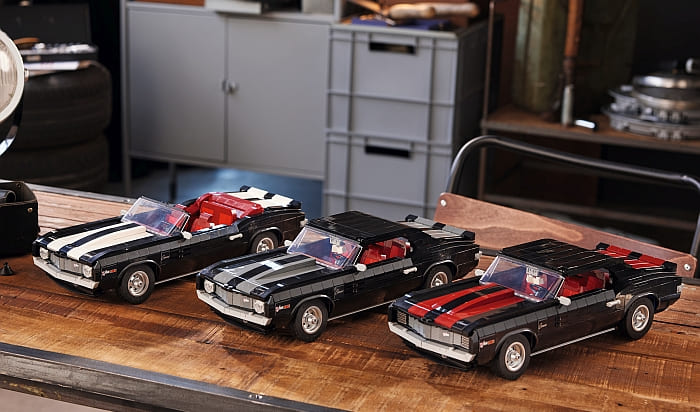
Honestly, any amount of choice in how someone can further customize a model will take you a long way toward how much people will like what you’ve built. And the reason is pretty obvious. Once you allow customizing your creation, you are including the builder in the process. The feeling of agency and decision-making ability connects the builder to you and your process unlike anything else. It takes it from the idea of “they built something you designed” to “something they built with you”. The only downside is sometimes people don’t know what to do with all the extra parts, so don’t get too carried away by giving too many choices.
LEGO CAMARO – APPLYING WHAT YOU LEARN
Every feature I mentioned here is perfectly executed in the Camaro. It is sometimes hard to recommend these larger vehicles due to their higher price. Also, there are now quite a few vehicle options out there, so if you aren’t a fan of Chevrolet, it would be very easy to skip these types of models. However, because of this, they are forced to excel at being some of the best building experiences around. I am personally an avid builder. I crave good building experiences. That is why I regularly look for vehicles in the LEGO Icons line. I feel they help make me a better builder for myself and for others.
I’ve recently built a number of fan creations and often the element that is lacking is the engaging building experience. It took LEGO designers years to slowly figure this concept out. And I think fans can utilize some of these same techniques.
You could even make this a challenge to overcome in your own designs. It doesn’t need to be a shape that is interesting. It can be a novel function like the way something works. I just recommend interesting shaping since this is a more accessible goal in nearly anything you build. And don’t forget to use parts to their full potential. Because clever part usage can make people remember your model over others.
Next, create a story for your model. Stay focused on a section to let people grasp what you’re trying to accomplish. You will get much farther if builders understand what is going on and they are able to see real progress as they follow along. Otherwise, it’s like ripping all the pages out of a book, scattering them around, and then randomly reading each page front and back and trying to understand the whole story. It’s confusing and not very fun.
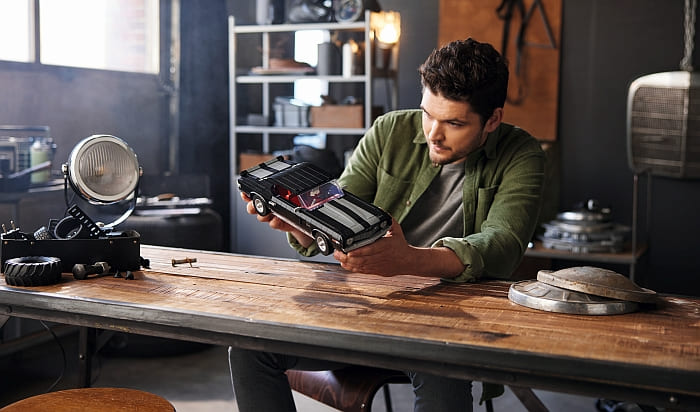
Finally, if you are able, allow for some customization. People like to feel included and important. And the easiest way to give them this experience is by allowing them to make choices toward the end result. This sort of design will turn your model from something only you treasure to something others treasure as well. If you would like to check out the set, it’s available at the LEGO Icons section of the Online LEGO Shop.

What do you think? How do you like the large LEGO Icons (formerly called LEGO Creator Expert) vehicles? Do you like to build them? Display them? And what do you think of the techniques we discussed here? Do you use any of them in your own models? Feel free to share and discuss in the comment section below!
And you might also like to check out the following related posts:












We’re seeing a lot more creative use of elements these days, of course we’re also getting more licensed sets, and others like the botanicals and modular buildings that seem to specialize in repurposing pieces in very interesting ways.
Providing an immersive building experience for others is definitely something I haven’t thought about. But you’re right, it makes sense for ideas projects and the like.
Good points will. I appreciate alternate builds and choices to customize. As you said, it makes me feel like I was invited to participate in the design process. But I end up customizing sets anyway whether I’m invited or not. 😀
Will, you said that you built all of the Creator Expert/Icons vehicles since the VW Bus. Which is your favorite so far?
For me, the Ford Mustang is still number one. Do you think this one is better in terms of the building experience?
I like building these, but then I don’t know where to put them. I only kept the VW Bettle on Display. And I would really like to get the Mustang at some point.